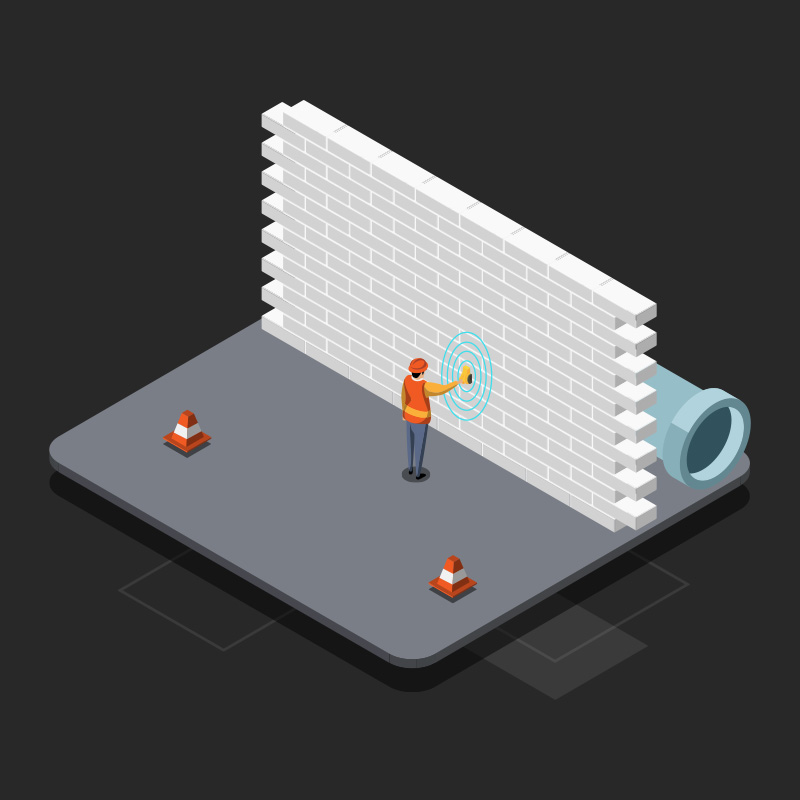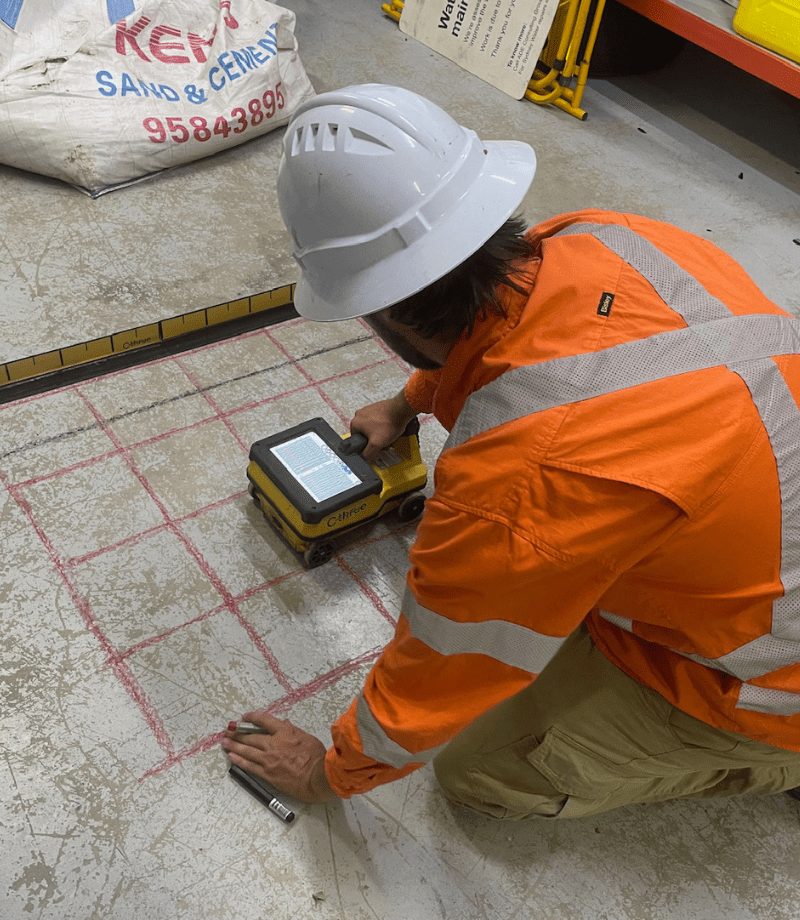Unveil the Transformative Power of Concrete Scanning in Optimizing Effectiveness and Safety
Concrete scanning has become a crucial tool in the construction industry, offering unrivaled benefits in enhancing project performance and making sure safety criteria. By using innovative innovation, concrete scanning enables professionals to see past the surface area, revealing surprise complexities that can impact the structural honesty of a structure. The transformative power of concrete scanning hinges on its capability to provide comprehensive understandings and real-time data, reinventing how tasks are intended and carried out. As we look into the ins and outs of this ingenious method, a world of opportunities opens up, showcasing a brand-new era of building techniques that focus on precision and safety.
Value of Concrete Scanning
Making certain the architectural honesty and safety and security of construction jobs begins with the vital step of carrying out detailed concrete scanning. Concrete scanning is a non-destructive approach used to spot and map subsurface aspects within concrete frameworks. This process is important in recognizing prospective risks, such as rebar, post-tension cables, and channels, that may be concealed within the concrete. By utilizing innovative innovations like ground-penetrating radar (GPR) and electromagnetic induction, building and construction teams can properly find these elements without creating any type of damage to the framework.
The value of concrete scanning can not be overstated, as it plays an essential role in preventing mishaps, minimizing job delays, and ensuring the lasting longevity of the building and construction. By identifying potential risks prior to the building and construction phase begins, builders can apply appropriate security actions and make informed decisions relating to the layout and execution of the job. In addition, concrete scanning assists in enhancing task timelines and budget by preventing unanticipated expenses and delays that might occur because of unanticipated blockages within the concrete. Inevitably, investing in comprehensive concrete scanning is an aggressive strategy that improves both efficiency and safety and security in building and construction jobs.
Exactly How Concrete Scanning Works
Concrete scanning operates as an essential device in construction jobs by using advanced modern technologies to identify and map subsurface elements without causing structural damage. Ground Permeating Radar (GPR) and Electromagnetic Induction (EMI) are two key techniques used in concrete scanning.
During the scanning procedure, the information gathered is analyzed in real-time, permitting immediate identification of prospective hazards or barriers below the surface area. By using these advanced innovations, concrete scanning considerably minimizes the risk of pricey damages and injuries on building and construction websites.
Benefits of Concrete Scanning
Making use of innovative scanning technologies in building tasks supplies a wide variety of benefits, enhancing both efficiency and security on-site. One of the main advantages of concrete scanning is the capacity to discover and find ingrained things such as rebar, post-tension cables, read this post here and conduits properly. By determining these components before exploration or cutting right into concrete structures, the threat of unexpected strikes is dramatically reduced, protecting against prospective injuries to employees and damage to the structure itself. Concrete scanning helps in preparation and designing a lot more efficiently, as it offers specific details concerning the location and deepness of structural parts.

Instance Studies: Concrete Scanning Success

In another situation, a construction firm used 3D concrete scanning to assess the problem of aging concrete frameworks in a historic building. The in-depth scans offered beneficial insights right into the level of deterioration and aided prioritize upkeep initiatives properly. By proactively addressing areas of problem determined via scanning, the business had the ability to prolong the life-span of the framework and ensure owner security.
These instance research studies underscore the transformative power of concrete scanning in enhancing efficiency, accuracy, and safety in building jobs.
Implementing Concrete Scanning in Projects
Carrying out innovative scanning modern technologies throughout construction projects has become increasingly vital for boosting accuracy and safety and security. By integrating concrete scanning into job planning and execution, building teams can identify potential risks, such as rebar or post-tension cords, concealed within concrete frameworks. This positive technique lessens the danger of crashes, hold-ups, and pricey rework, ultimately resulting in a lot more reliable job timelines and spending plans.
To execute concrete scanning successfully, task supervisors should team up closely with experienced scanning professionals to figure out one of the most appropriate scanning methods for the certain task needs. Engaging scanning professionals from the beginning of a project allows the team to create thorough scanning strategies that attend to vital locations of problem and make sure detailed information collection.
Moreover, incorporating concrete scanning right into routine job process can improve decision-making processes, as real-time check data supplies prompt understandings right into the problem of concrete frameworks - site link Concrete Scanning. This data-driven technique assists in notified problem-solving and enables teams to make changes quickly, cultivating a society of efficiency and security throughout the job lifecycle

Final Thought
Finally, concrete scanning plays a critical function in boosting efficiency and safety in building tasks. By making use of advanced modern technology to map and discover out underlying frameworks within concrete, this procedure aids to avoid costly errors, make certain structural stability, and lessen threats on website. With the ability to discover hidden aspects and provide precise information, concrete scanning verifies to be a useful device for maximizing job outcomes and maximizing general success.
Concrete scanning is a non-destructive method utilized to spot and map subsurface components within concrete structures. Additionally, concrete scanning aids in optimizing job timelines and spending plan by preventing unexpected prices and delays that might emerge due to unpredicted obstructions within the concrete. One remarkable case research study entails a large renovation task where concrete scanning played a crucial duty in making certain task success.In an additional instance, a construction company made use of 3D concrete scanning to analyze the problem of maturing concrete frameworks in a historical building. By integrating concrete scanning into job planning and execution, building and construction groups can determine potential threats, such as rebar or post-tension wires, hidden within concrete structures.